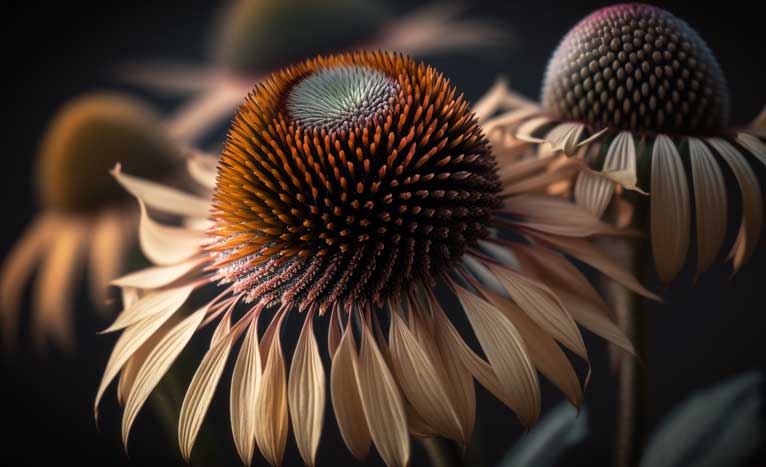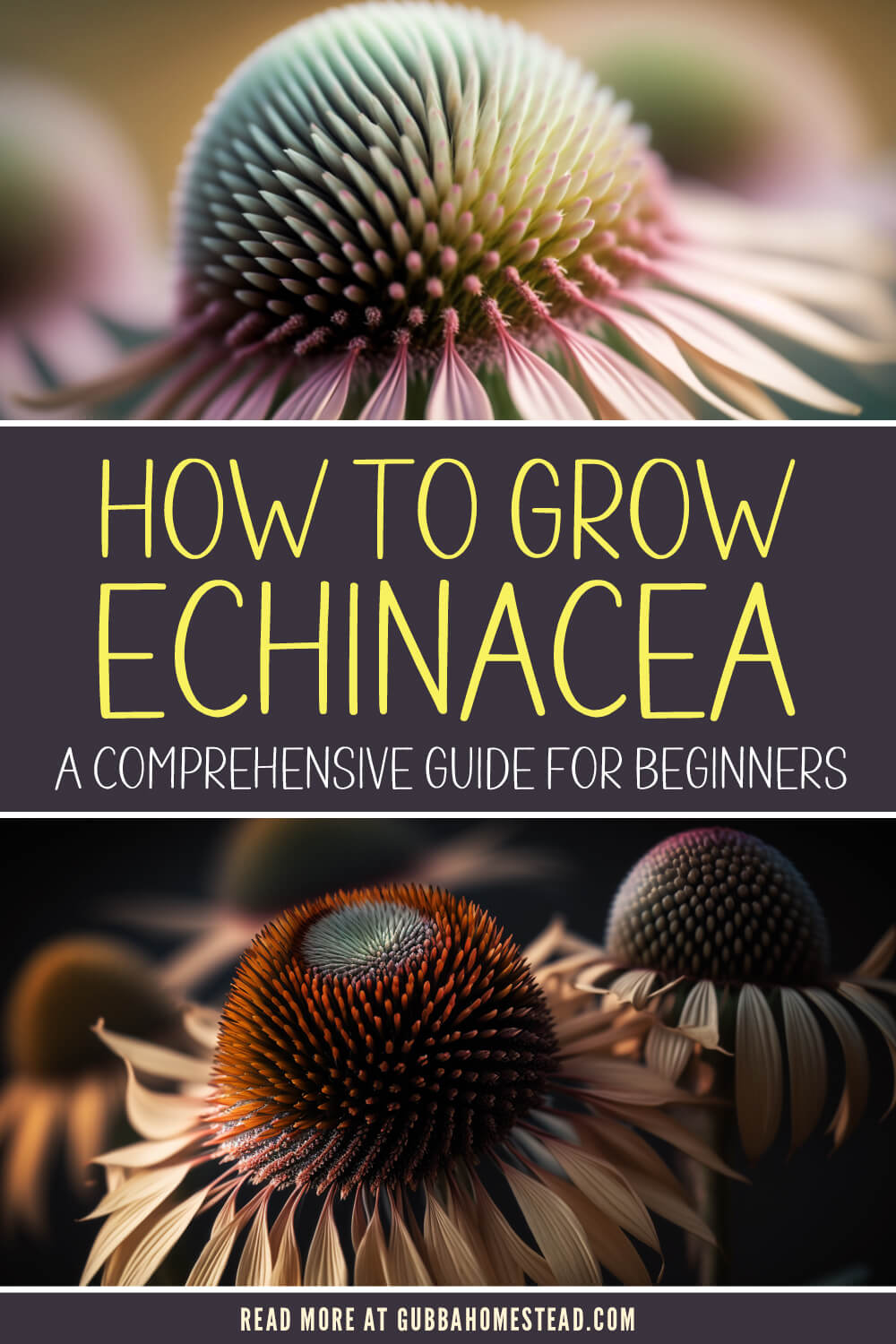If you're looking for a plant that's both easy to grow and has a variety of health benefits, look no further than echinacea. This beautiful plant, also known as the purple coneflower, is a member of the daisy family and is native to North America. Echinacea is not only easy to care for, but it also has numerous medicinal properties. In this blog, we'll go over everything you need to know to successfully grow your own echinacea plant.
What I love most about this vibrant flower on my homestead is the punch of purple it brings to my surroundings. Flowers definitely spruce the place up a bit. These flowers can become a part of your garden for more than just aesthetic reasons because they have medicinal value for an added bonus to your garden. I also love that it is a perennial, so you get it going once and it pretty much maintains itself. I’m all about self-sustaining on my homestead and no-fuss gardening, so these are the perfect flowers. My bees also love them—bonus!
If you are looking for a flower to grow for honeybees, echinacea is a wonderful choice.

What is Echinacea?
Echinacea is a herbaceous perennial plant that's prized for its medicinal properties. It typically grows to a height of 2 to 4 feet and has large, showy flowers with a prominent cone-shaped center. Echinacea is available in a variety of colors, including pink, white, and of course, purple.
Choosing the Right Location
The first step in successfully growing echinacea is choosing the right location. These plants require full sun to thrive, so look for a spot in your garden that gets at least 6 hours of sunlight per day. It's also important to choose a location with well-draining soil, as echinacea doesn't like to have its roots sitting in water. If you have hard, clumpy, clay-like soil, loosen it up a bit so the flower roots can thrive and grow.
Planting Echinacea
Once you've chosen the right location, it's time to plant your echinacea. Start by preparing the soil by removing any weeds and debris. Dig a hole that's approximately twice the size of the plant's root ball and place the plant in the hole, ensuring that it's level with the surrounding soil. Water the plant thoroughly and add a layer of mulch to help retain moisture.
Watering and Fertilizing
Echinacea doesn't require a lot of water, but it's important to ensure that the soil stays consistently moist. Water your plant deeply once a week, or more often if the weather is particularly hot or dry. Echinacea doesn't require a lot of fertilizer, but you can give it a boost by applying a balanced fertilizer once in the spring and once in the summer. I will sprinkle compost around it or chicken manure, just a little though. Like I mentioned earlier, this is a simple homestead flower.

Pruning and Deadheading
Echinacea doesn't require a lot of maintenance, but it's a good idea to deadhead the spent blooms regularly to encourage the plant to produce more flowers. You can also prune back the stems in the fall to promote new growth in the spring. If you prune and deadhead, this encourages more growth by allowing the flower to allocate energy to other parts of the flower.
Pests and Diseases
Echinacea is relatively pest and disease-free, but it can be susceptible to powdery mildew and root rot. To prevent these issues, ensure that the plant has good air circulation and avoid overwatering.
Harvesting Echinacea
Echinacea is typically harvested in the fall when the plant is in full bloom. To harvest, cut the stems at the base of the plant and hang them upside down to dry. Once the plant is completely dry, you can remove the flowers and store them in an airtight container.
Health Benefits of Echinacea
Echinacea is widely known for its immune-boosting properties. It's also been shown to have anti-inflammatory and antimicrobial properties, making it an effective treatment for a variety of conditions, including colds, flu, and infections.
Growing echinacea is a rewarding and easy experience that can provide both beautiful flowers and medicinal benefits. By choosing the right location, planting correctly, and providing proper care, you can enjoy the benefits of echinacea in your own garden.
FAQs
Is echinacea difficult to grow?
No, echinacea is relatively easy to grow and doesn't require a lot of maintenance. I’m telling you, this is a perfect homestead flower. Because it is a perennial, you just need to fuss with it one time to get it planted then do minimal maintenance to maintain it.
Can echinacea be grown in containers?
Yes, echinacea can be grown in containers, as long as the container is large enough to accommodate the plant's root system. Think decorative grow pots around your yard or deck!
How often should I water my echinacea?
Echinacea doesn't require a lot of water, but it's important to ensure that the soil stays consistently moist. Water deeply once a week, or more often if the weather is particularly hot or dry.
How do I harvest echinacea?
Echinacea is typically harvested in the fall when the plant is in full bloom. Cut the stems at the base of the plant and hang them upside down to dry. Once the plant is completely dry, you can remove the flowers and store them in an airtight container.
What are the health benefits of echinacea?
Echinacea has been shown to have immune-boosting, anti-inflammatory, and antimicrobial properties, making it an effective treatment for a variety of conditions, including colds, flu, and infections.


